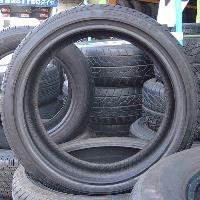(BRUSSELS) – A new tyre labelling scheme for car and trucks, provisionally agreed Wednesday by EU institutions, aims to increase consumer awareness and fuel savings, improve safety and decrease noise pollution.
It is thought the new labelling scheme – informally agreed by MEPs and the Finnish EU Presidency – could lead to a reduction of 10 million tonnes of CO2 emissions and to an increased turnover of EUR 9 billion. The new regulation on the labelling of tyres will repeal and replace the 2009 Tyre Labelling Regulation once it enters into force.
The new tyre label would allow consumers to make informed choices, said the legislation’s rapporteur Henna Virkkunen MEP: “For example, information on a tyre’s fuel efficiency helps consumers to cut emissions and save money, as tyres contribute to as much as 20-30% of the vehicle’s fuel consumption.”
She also welcomed the inclusion of microplastics for the labels: “I am happy that all the institutions have agreed to include microplastics on the label as soon as possible, once reliable testing methods and standards become available.”
Under the new rules, the labelling will have to indicate the tyre’s fuel efficiency, wet grip and external rolling noise. Information on snow and ice performance may also be included on the label with pictograms.
The label can be added to in the future – by means of so-called ‘delegated acts’ – to include information on mileage, abrasion, retreated tyres and for snow and ice grip. Mileage and abrasion performance data would be added when a testing method becomes available.
Labels must be clearly visible to consumers, be on display in all situations where tyres are sold, including online, and should provide a QR code for easy scan.
The aim of the new bill, still to be formally adopted, is to increase consumer awareness and improve market surveillance across the EU, to reap the potential benefits for the environment, health and safety. The abrasion of tyres during use is a significant source of micro-plastics, which are harmful to the environment.
The new labelling scheme would also apply to heavy-duty vehicles (so-called C3 tyres), which are currently not covered by EU labelling requirements. Freight accounts for a large percentage of GHG emissions coming from transport. Since C3 tyres consume more fuel and cover more kilometres per year than C1 (passenger cars) and C2 (light commercial vehicles), they have greater potential in terms of reducing fuel consumption and emissions.
The informal agreement will now have to be endorsed by the European Parliament’s Industry committee and the Council’s Committee of Permanent Representatives (COREPER). If then approved by both Parliament and Council, it would be applicable from 1 May 2021.



